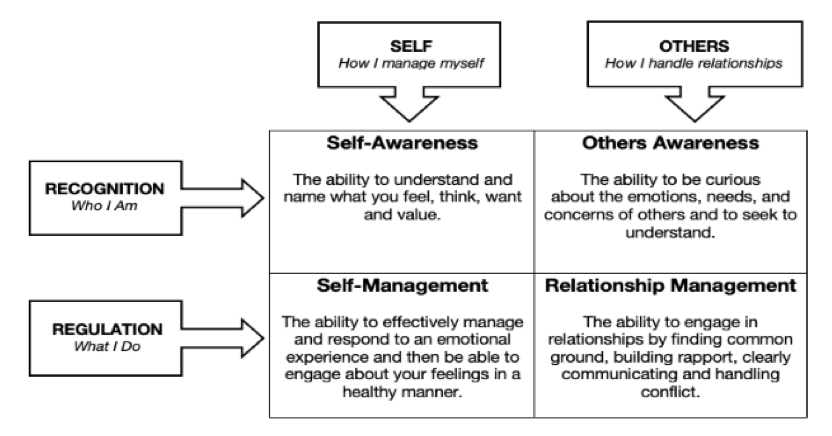Self Management: If You Can Name It, You Can Tame It
Emotions move us. The word emotion comes from a Latin word that means to stir up or to move. Like nitroglycerin, emotions can move us in a healthy and healing way (like a nitroglycerin tablet) or in a destructive way (like dynamite blowing up a building).
The past week the world of sports illustrates how emotions can move us toward destruction: the fight at the end of the Kansas-Kansas State basketball game, a fan throwing trash at Bronny James and a North Carolina father tackling his son’s opponent at a high school wrestling match—during the match!
What is similar in each of these situations is the lack of self-control. In the Emotional Intelligence world, it’s called self-management or emotional regulation. It’s the second quadrant in developing emotional intelligence. In the first quadrant, we recognize (self-awareness) what we are feeling and we clearly name it. In the self-management quadrant, we develop the skills to choose how we want to respond to that emotion; in other words, we tame what we’ve named.
Self-management is the ability to effectively manage and respond to an emotional experience and then be able to engage about your feelings in a healthy manner. One of the key words in that definition is respond. Emotionally intelligent people have the ability to respond instead of react. The sports examples above were much more reactive than an intentional response to the emotional moment.
When we merely react to an emotional experience, there is no thoughtfulness or mindfulness of the consequences to our behavior. It usually leads us to a fight or flight reaction instead of a healthy and measured response. Healthy self-management allows us to take responsibility, be adaptable, engage directly and be clear in naming our desires.
So, how do we grow in self-management?
Obviously, we have to be self-aware first and then name what emotion we are feeling. Once that happens, it’s important to PAUSE.
PAUSE – Slow-down and don’t keep going. Give yourself a time-out. Many times, we know when we’re headed down a bad path but we plow ahead instead of pausing. When you are flooded with a strong emotion, the first step is to pause.
ASSESS – Take your own pulse. Look in the mirror. What actually happened? What are you focused on? What has triggered you? Do you notice a reaction in your body?
UNDERSTAND – What do you want? What are your historical tendencies when you feel this? How does that usually work out for you? Is there a better way forward? What story are you telling yourself about the situation? How important is your response in this situation? Does this require a response? What do you need to calm yourself or to find courage?
SELECT – This is the place of choice; you can select how you want to respond. Once you’ve taken the time to assess and understand, you can choose the best course of action.
ENGAGE – Respond (don’t react) to the situation. This is where you may speak with compassion, courage and clarity. It may be the place where you engage by not speaking, but simply extending grace and moving on.
Obviously, it takes time and practice to learn to PAUSE. But it can and must be learned. It’s amazing how quickly you can move from pausing to engaging once you become more aware of what you are feeling and your tendencies. Practice taking a PAUSE with your spouse or with a close friend. When you are aware of a strong emotion, be willing to say “let me pause for a minute before I respond”. That’s healthy self-management and it’s the path to growing and maintaining strong relationships.

